- World Population Review Newsletter
- Posts
- Where Childcare Costs More Than Rent
Where Childcare Costs More Than Rent
The global childcare crunch reshaping families—and economies.
In partnership with TechPresso
Greetings, wise navigator of life’s big decisions,
What if going to work meant losing money? For millions of families worldwide, that’s the reality—thanks to skyrocketing childcare costs and a shortage of caregivers.
This isn’t just a parenting issue. It’s an economic fault line—undermining workforce participation, widening inequality, and putting pressure on national budgets.
In this edition, we uncover how seven countries are confronting the crisis. Some are innovating. Others are falling behind. The choices they make today may shape your own—where to live, invest, or thrive.
Let’s dive in.
Techpresso curates the weird, wild, and essential stories in tech — daily in 5 minutes.
The stories that matter most in tech, minus the hype. Join thousands of professionals who read Techpresso to stay sharp, save time, and cut through the noise.
1. 🇺🇸 United States: The Working Parent Paradox
In the U.S., many parents are stuck in a no-win situation: earn a paycheck or afford childcare—but rarely both. In over half the states, full-time infant care costs more than rent. In places like Massachusetts and California, the price tag can top $20,000 a year per child.
Government assistance exists, but it’s often hard to access and wildly inconsistent. And access itself is a challenge: 60% of Americans live in “childcare deserts,” where licensed providers are scarce.
Still, a few glimmers of hope are emerging. New Mexico, for instance, uses state revenue to offer free or subsidized childcare for most families—an experiment the rest of the country is watching closely.
💡 Curious contrast: A two-child household in Boston can expect to spend nearly 30% of income on childcare—before taxes.
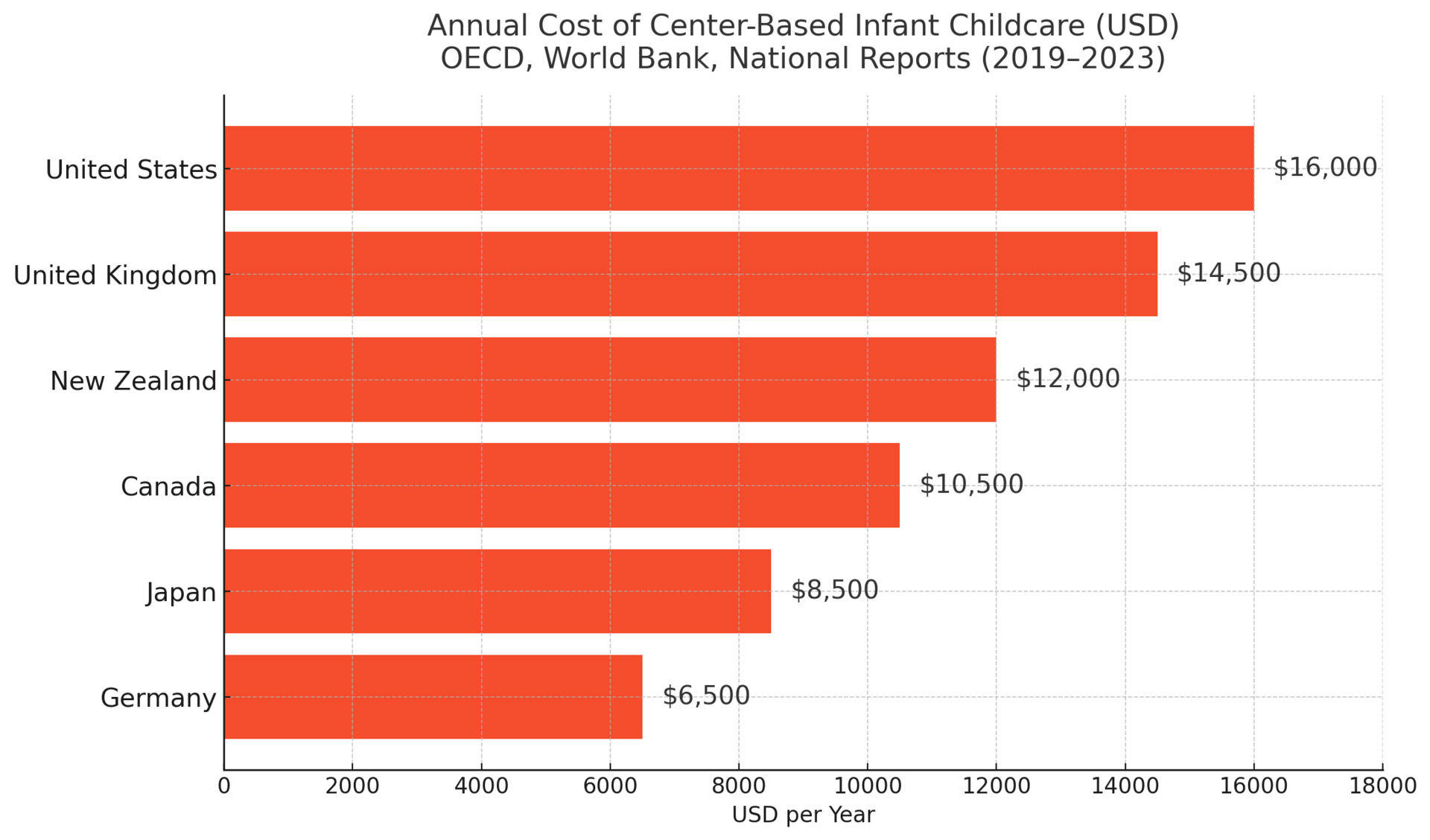
2. 🇸🇪 Sweden: Affordable, Accessible, and Admirable
In Sweden, childcare isn’t just affordable—it’s almost symbolic of national values. Parents pay a maximum of around $150/month, no matter their income. The system emphasizes equity, accessibility, and quality—with publicly funded centers, well-paid staff, and a streamlined process that starts when a child turns one.
Parents are also given 480 days of paid leave, most of which can be shared between both partners—promoting balance at home and at work.
The impact? Higher employment, better early education, and reduced financial stress across the board.
💡 Did you know? Sweden spends over 1.6% of GDP on early childhood education—triple the U.S. level.
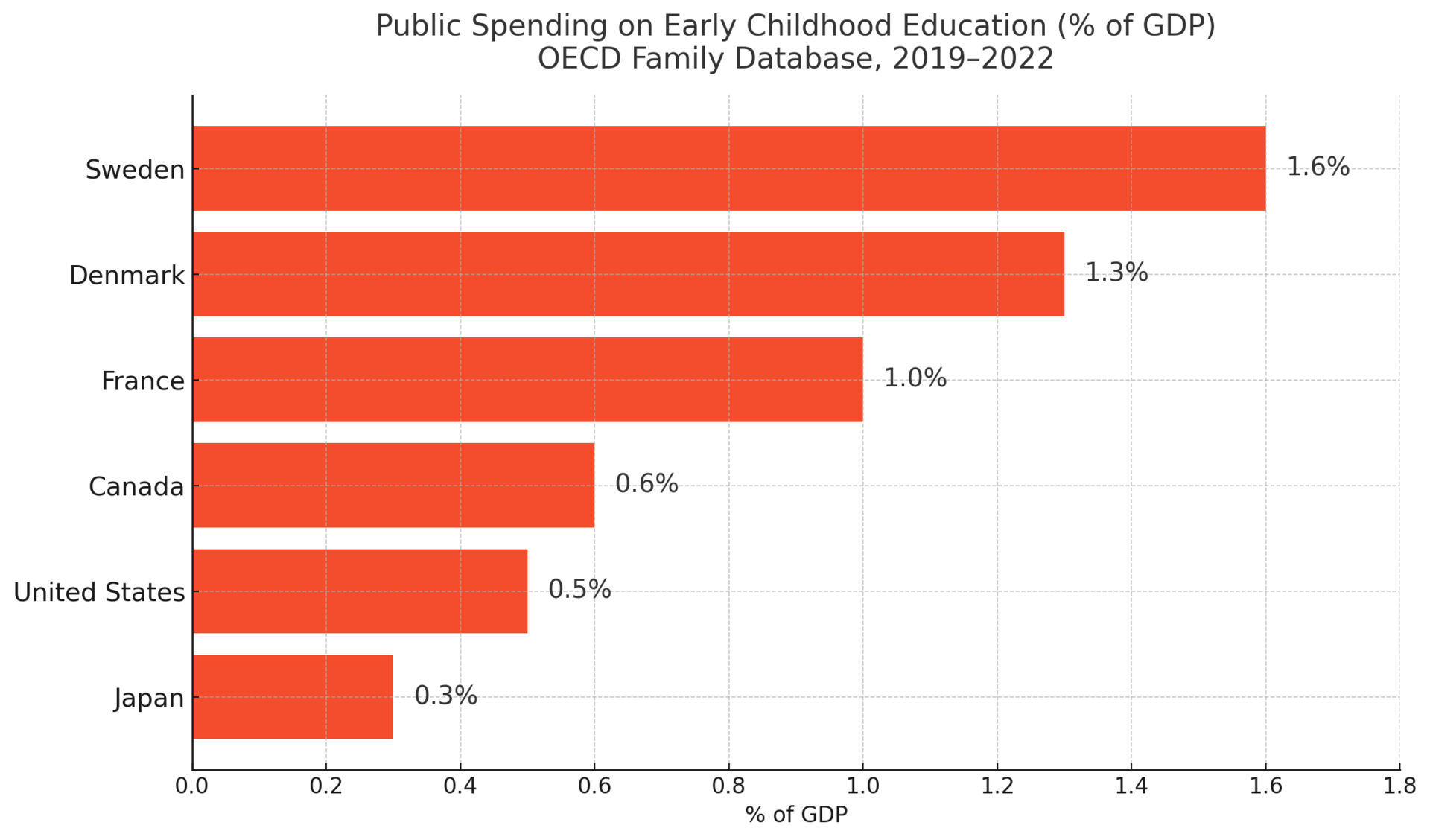
3. 🇯🇵 Japan: Cultural Norms Meet Economic Cost
Japan’s demographic challenges are well known, but childcare remains one of the most stubborn roadblocks to growth. Though parents are entitled to long parental leave, finding a daycare spot—especially in big cities—is a battle.
The infamous “taiki jidō” (waiting children) list continues to grow. Many women are pushed out of the workforce entirely after childbirth—not because they want to, but because there’s nowhere safe to leave their child.
Efforts are underway to build more centers and subsidize private providers, but deep-rooted cultural expectations still often discourage working motherhood.
💡 Eye-opening stat: Japan loses an estimated $150 billion in GDP annually due to low female workforce participation—much of it linked to childcare shortfalls.
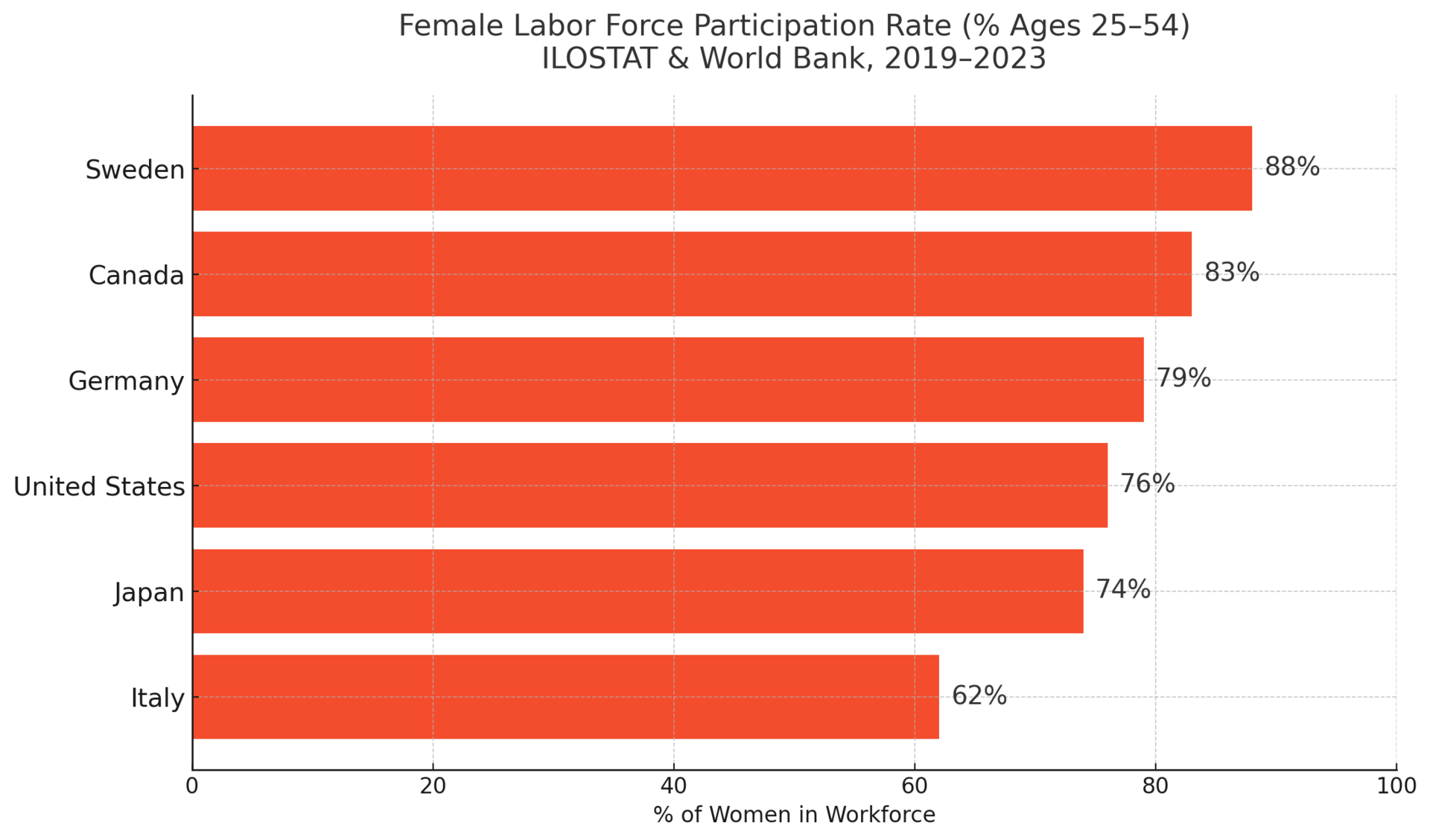
🧠 You Missed What in Tech Today?
While you were on that Zoom call, someone trained an AI to play therapist… and a billionaire's data got scraped. Techpresso catches the essential, the bizarre, and the surprisingly useful — in 5 minutes a day.
4. 🇩🇪 Germany: Legal Rights, Local Realities
Since 2013, Germany has guaranteed a child’s legal right to daycare from age one. But in many areas, especially cities, there simply aren’t enough spots. Parents often wait months, sometimes years, to secure a place—forcing many to reduce hours or delay returning to work.
Subsidies keep costs relatively low, and public investment is growing. But until supply catches up, the law remains more promise than practice for thousands of families.
Encouragingly, Germany has launched a national campaign to attract and train new childcare workers, aiming to balance quantity with quality.
💡 Fascinating insight: Around 40% of German parents have declined job opportunities or cut back on work due to childcare constraints—even with a legal entitlement to care.
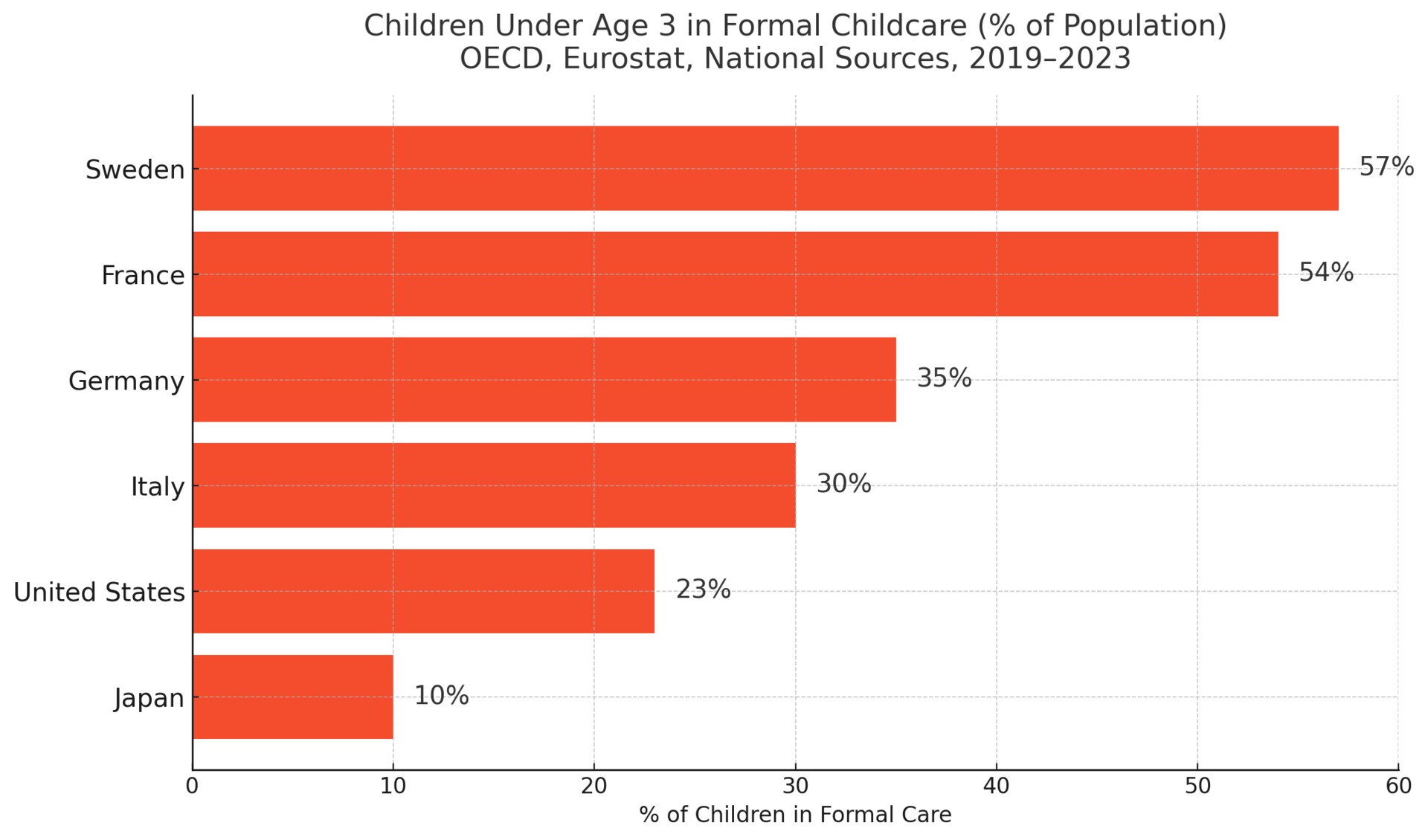
5. 🇨🇦 Canada: A Nation in Transition
Canada’s childcare story is one of big ambition—and big variation. In 2021, the federal government pledged to roll out $10-a-day childcare across the country. Some provinces, like Quebec, already have systems in place, while others are racing to expand.
Quebec’s model has been a standout success. It not only increased access, but actually paid for itself through tax revenues and economic growth—thanks to more parents (especially moms) rejoining the workforce.
However, availability remains a hurdle. Long waitlists and staffing shortages threaten to slow progress, particularly in fast-growing areas.
💡 Financial payoff: Every dollar invested in Quebec’s childcare system has returned $1.75 in economic benefits, according to government data.
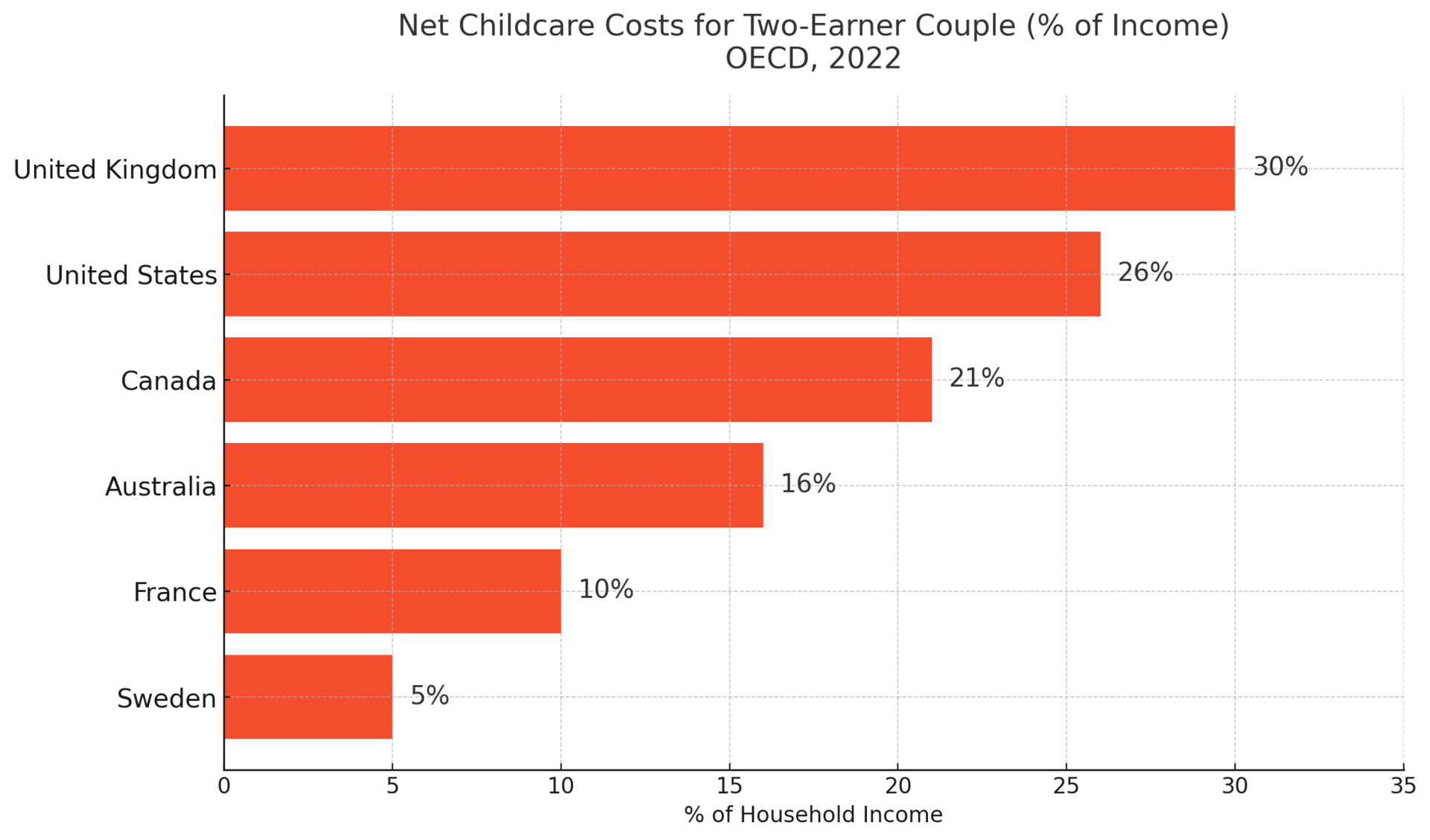
6. 🇦🇺 Australia: Making Progress, But Not Quite There
Australia’s 2023 reforms have dramatically increased subsidies for most families, with low-income earners receiving up to 90% coverage. But high costs persist—especially in cities like Sydney and Melbourne.
After subsidies, many families still pay thousands per year, and long waitlists make planning difficult.
The country is also grappling with a looming workforce shortage in the care sector. Without enough trained caregivers, expansion may falter.
💡 Looking ahead: Australia could face a shortage of 39,000 childcare workers by 2026, unless recruitment improves significantly.
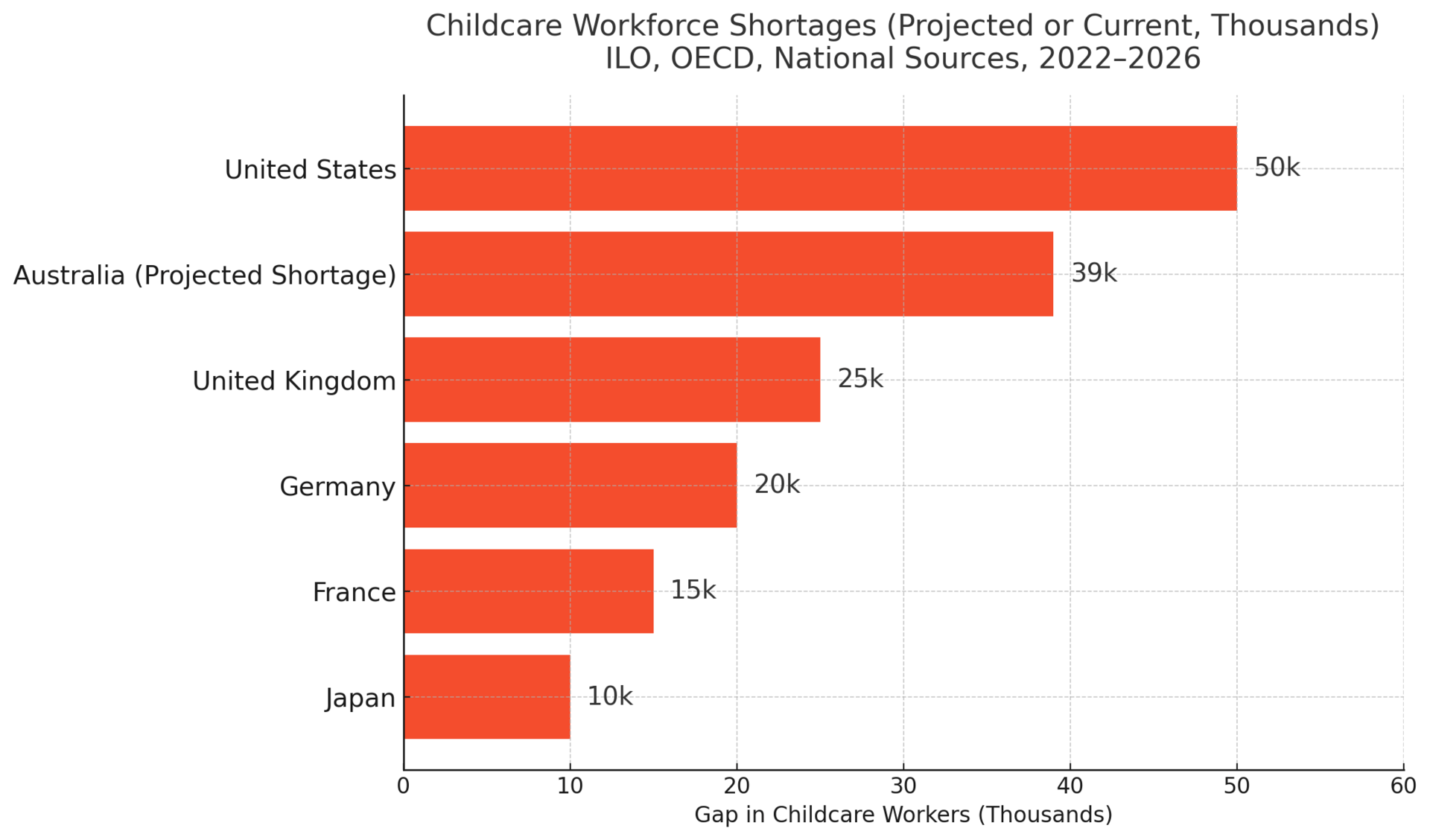
7. 🇸🇬 Singapore: Efficiency Meets Empathy
Singapore has blended thoughtful policy and strategic investment into one of the most efficient childcare systems in Asia. Full-day preschool can cost as little as $3/day for low-income families, thanks to strong subsidies and a tiered fee model.
The government also runs “anchor operators”—large providers that receive public funding to deliver high-quality, low-cost care.
What really sets Singapore apart is how integrated the approach is: childcare access ties into housing policy, early education, and workforce planning.
💡 Smart strategy: Families that live near their children’s school receive priority placement and extra housing grants—a subtle but effective way to support working parents.
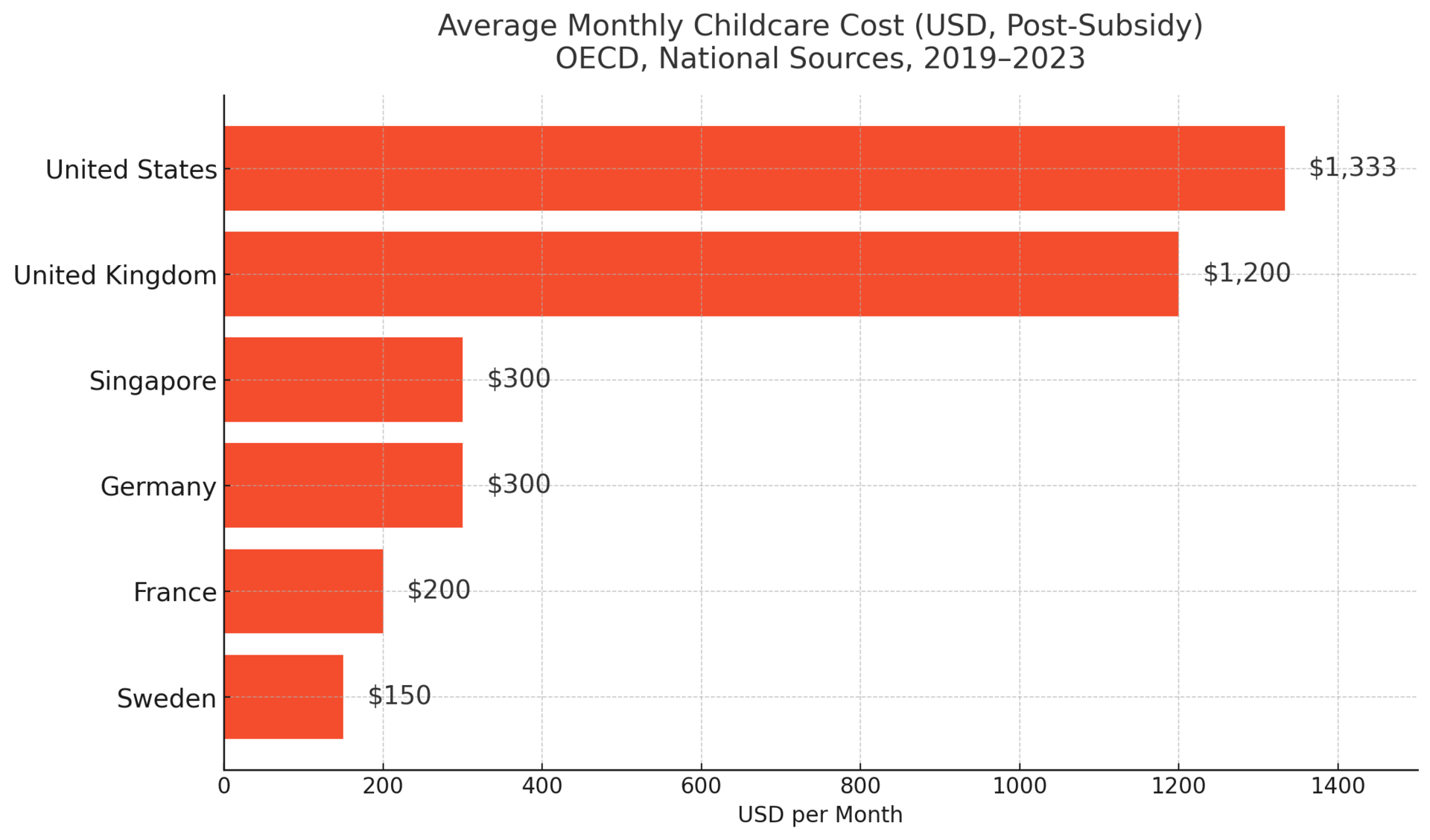
The childcare crisis isn’t just about rising costs—it’s a test of priorities. Can parents afford to work? Can children get a fair start? Can economies grow without investing in those who raise the next generation?
Some countries are stepping up. Others are stalling. But across the globe, one truth holds: how a nation supports families reveals everything about its future.
Until next time—stay curious, stay informed, and keep questioning the status quo.
Warm regards,
Shane Fulmer
Founder, WorldPopulationReview.com
P.S. Want to sponsor this newsletter? Reach 124,000+ global-minded readers — click here!

